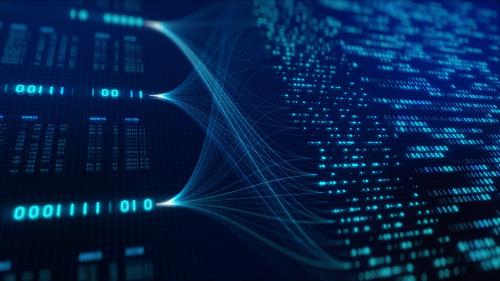The deployment of artificial intelligence is already transforming the world of work, with emerging effects that include the displacement of entry-level workers, rising demand for new AI skills, and fundamental changes in how tasks are executed across industries. AI’s undoubtedly dramatic future impact is not just a function of the technology, but also of how individuals and institutions choose to use it. So, how might we use this engine of disruption—and opportunity—to shift its trajectory toward inclusive outcomes in the labor market?
For decades, the bachelor’s degree has served as a proxy for employability for many middle- and high-wage jobs, effectively screening workers who are skilled through alternative routes (“STARs”) out of key economic mobility opportunities. Now, with the enhanced technological capabilities of generative AI, we can do better. We have the opportunity to replace that blunt proxy with something far more precise: a dynamic assessment of the actual skills of our workforce, as well as a better understanding of how workers acquire and deploy them in real time. Used this way, AI could just as well stand for “amplified intention.” If applied equitably and transparently, AI can help shift hiring systems from exclusion to inclusion—redefining opportunity in the 21st century labor market.
Wires crossed: Understanding the broken labor market
Before we assess how AI can change the world of work for the better, we must first examine the forces that led to today’s broken labor market. Today, over 70 million STARs form the backbone of the U.S. workforce. STARs were once the drivers and beneficiaries of a tremendous surge in upward economic mobility in the decades following World War II. However, in the early 2000s, upward mobility stalled, with deleterious effects on talent pipelines, family incomes, and the broader contract with the American working class. Much of this decline was the result of companies responding to changing technologies with talent management practices that had unintended and often unacknowledged consequences.
In Opportunity@Work’s recently published “State of the Paper Ceiling” report, we explain that between 2000 and 2019, a “paper ceiling”—invisible barriers such as degree screens, biased algorithms, stereotyping, and exclusive professional networking—caused STARs to lose access to almost 7.5 million jobs that had traditionally provided pathways to upward mobility. This happened despite the fact that over 30 million STARs demonstrated skills for higher-wage jobs, as employers changed core business practices and began to rely on flawed algorithms to sort through applications and identify and evaluate talent.
Rewiring the system: Progress in skills-first hiring proves what’s possible
“State of the Paper Ceiling” offers a perspective on how to reverse this harm and expand upward mobility, with implications for our use of AI. Consider the aftermath of two recent crises. After the 2008 financial crisis, the downward trend for STARs accelerated as “screening out” by degrees proliferated. However, following the pandemic-induced contraction of 2020, STARs fared somewhat better; although they still lost more ground and recovered less quickly than workers with degrees, the decline was less severe. These two events were characterized by different fiscal and monetary responses that impacted labor market opportunities and wages, while the 2020 recovery was also influenced by a growing skills-based hiring movement.
Over the past five years, Opportunity@Work has collaborated with partners across the nonprofit, public, and private sectors to launch the Tear the Paper Ceiling campaign, which highlights STARs’ contributions to the workforce and the barriers to mobility they face. Recognition of the “paper ceiling” has increased steadily since the inception of the campaign, with 38% of employers citing familiarity with the term and 15% of STARs self-identifying as STARs (both up from 0% pre-campaign). These shifting perceptions are a starting point for broader social change.
Changes in organizational culture and practice, especially in large companies and government entities, require realignment of incentives and resources. They also take time, but these shifts in perception are beginning to drive important changes in behavior. Employers, policymakers, and STARs themselves are contributing to new models of inclusive hiring. Over half of U.S. state governments have committed to modernizing hiring practices to enable more STARs to enter middle- and high-wage jobs in the public sector. In the private sector, companies are testing and iterating skills-based hiring practices. And across both the public and private sector, HR technology companies are evolving their solutions to support these skills-first employers.
‘Amplified intention’: Leveraging AI to rewire the labor market
The U.S. economy is entering a profound technological and economic transition, one that requires intention to maximize societal benefit and minimize risk. So, we should think of AI as “amplified intention”—a technology designed to observe, replicate, and accelerate actions. In today’s labor market, if we direct AI to observe the patterns of the past, it will replicate the paper ceiling and accelerate its exclusionary effects. Instead, we should direct AI technologies to observe and understand workers’ skills and replicate skills-based pathways to accelerate the tearing of the paper ceiling, exponentially opening up opportunities to STARs and connecting employers to the skilled talent they need.
What would that look like in practice? First, let’s support employers to use AI for inclusion. With the analytic power to review millions of job descriptions, job performance data, job transitions, and more, we have the ability to refine skill taxonomies for a better understanding of the skills needed for jobs and the many, varied ways those skills are attained. With this knowledge, we will be better equipped to support American employers to create new job categories, clarify skills-based pathways, and broaden access to jobs that require valuable but often overlooked skills.
Second, let’s help workers leverage AI to adapt. In a labor market where new skills are emerging at a high velocity, where AI technologies are augmenting existing skills in workers, and where skills can create an increasingly agile workforce positioned for a wider range of roles, AI can also equip workers with the tools to keep up, enabling them to pivot more easily across tasks as demands shift. These technologies may very well serve to enhance—rather than replace—workers’ existing strengths.
AI can supercharge a STARs-powered economy in this next generation. But because the broad use of AI promises to increase our reliance on algorithms, it is essential to consider the data and reasoning behind these algorithms in order to avoid the replication and amplification of past and present biases. If we succeed, this moment of disruption could serve as a moment of opportunity.
The Brookings Institution is committed to quality, independence, and impact.
We are supported by a diverse array of funders. In line with our values and policies, each Brookings publication represents the sole views of its author(s).





Commentary
Using AI to advance skills-first hiring
July 8, 2025